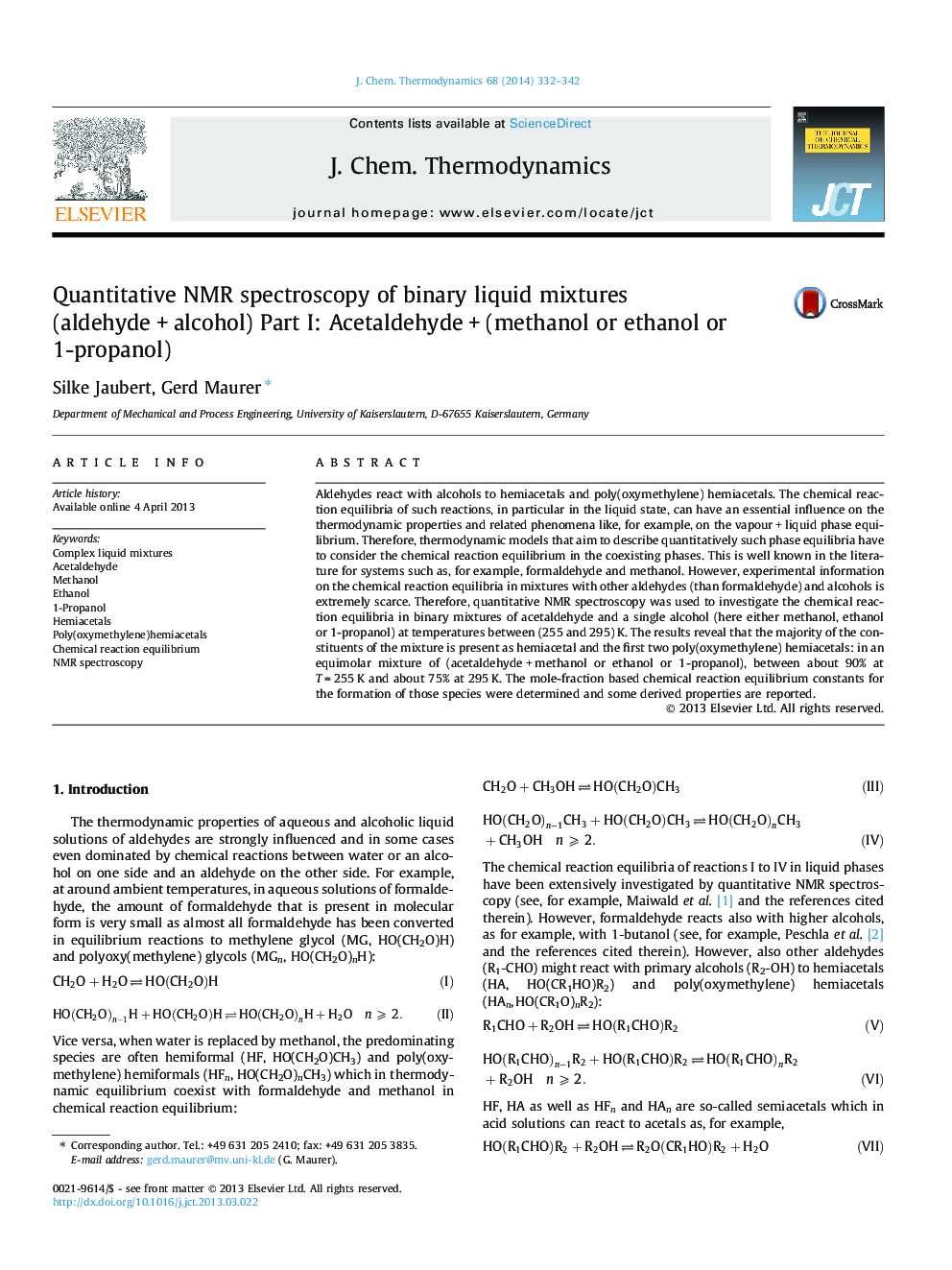| Article ID | Journal | Published Year | Pages | File Type |
|---|---|---|---|---|
| 215604 | The Journal of Chemical Thermodynamics | 2014 | 11 Pages |
•Formation of hemiacetal/poly(oxymethylene) hemiacetals in liquid binary mixtures.•Acetaldehyde and a low molecular alcohol (methanol or ethanol or 1-propanol).•Quantitative 13C NMR spectroscopy at temperatures between (255 and 295) K.•Hemiacetals are the predominant species.•(Acetaldehyde + methanol (50 + 50)) at 255 K: hemiacetal (polymers) >80% (≈10%).
Aldehydes react with alcohols to hemiacetals and poly(oxymethylene) hemiacetals. The chemical reaction equilibria of such reactions, in particular in the liquid state, can have an essential influence on the thermodynamic properties and related phenomena like, for example, on the vapour + liquid phase equilibrium. Therefore, thermodynamic models that aim to describe quantitatively such phase equilibria have to consider the chemical reaction equilibrium in the coexisting phases. This is well known in the literature for systems such as, for example, formaldehyde and methanol. However, experimental information on the chemical reaction equilibria in mixtures with other aldehydes (than formaldehyde) and alcohols is extremely scarce. Therefore, quantitative NMR spectroscopy was used to investigate the chemical reaction equilibria in binary mixtures of acetaldehyde and a single alcohol (here either methanol, ethanol or 1-propanol) at temperatures between (255 and 295) K. The results reveal that the majority of the constituents of the mixture is present as hemiacetal and the first two poly(oxymethylene) hemiacetals: in an equimolar mixture of (acetaldehyde + methanol or ethanol or 1-propanol), between about 90% at T = 255 K and about 75% at 295 K. The mole-fraction based chemical reaction equilibrium constants for the formation of those species were determined and some derived properties are reported.
